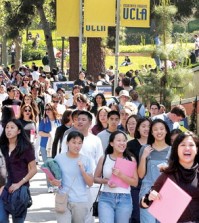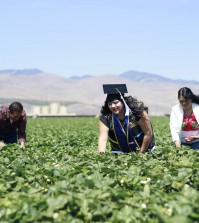- California Assembly OKs highest minimum wage in nation
- S. Korea unveils first graphic cigarette warnings
- US joins with South Korea, Japan in bid to deter North Korea
- LPGA golfer Chun In-gee finally back in action
- S. Korea won’t be top seed in final World Cup qualification round
- US men’s soccer misses 2nd straight Olympics
- US back on track in qualifying with 4-0 win over Guatemala
- High-intensity workout injuries spawn cottage industry
- CDC expands range of Zika mosquitoes into parts of Northeast
- Who knew? ‘The Walking Dead’ is helping families connect
‘Tripitaka Koreana’ may be renamed

Culture authorities are considering whether to rename the “Tripitaka Koreana,” a 13th-century collection of over 80,000 woodblocks holding Buddhist texts kept at Haeinsa Temple in North Gyeongsang Province.
(Korea Times file)
By Kim Tong-hyung
Cultural officials are open to the possibility of renaming the ”Tripitaka Koreana,’’ a 13th-century collection of 80,000 woodblocks holding Buddhist texts kept at Haeinsa Temple in North Gyeongsang Province.
The debate over changing the English name of the artifact started in September when UCLA Buddhist studies professor Robert Buswell said at a seminar in September that the current title doesn’t properly represent the scale of the collection.
He called the Tripitaka Koreana a ”misnomer’’ during the seminar.
“(The name) doesn’t give a sense of the real scope and range of the materials found in Goryeo Daejanggyeong,” he said.
”Tripitaka means the three divisions of the canon based on the old Indian model. The reality is that Goryeo Daejanggyeong is much bigger and broader in scale than the nomenclature used for the Tripitaka Koreana,’’ Buswell said.
Organizers of the Tripitaka Koreana Festival, which continues through Nov. 10 at areas near Haeninsa, are now considering public opinion. They said than 900 people have expressed support for a name change on its recently-opened online message board on Daum (www.daum.net) through Monday morning.
Haeinsa officials and North Gyeongsang municipal authorities, who collaborate for the annual festival, are in agreement to officially recommend a new name for the woodblocks to the Cultural Heritages Administration (CHA) if popular opinion is in support of the change.
While the official Korean name of the Tripitaka Koreana is Goryeo Daejanggyeong, it’s more commonly called ”Palman Daejanggyeong’’ because ”palman’’ means 80,000.
”The natural and cultural assets celebrated by UNESCO have mostly been listed under names that are consistent with the ways they are pronounced by locals. Tripitaka Koreana has been an exception in this and this is a source of confusion,’’ said an official from the festival’s organizing committee.
”There of course needs to be in depth scholastic research and discussions before settling on a new name. Even in Korean, both names are practically used for official accounts.’’
Tripitaka Koreana was created over 16 years during the Goryeo Kingdom (918-1392). It consists of 81,258 wooden blocks of Buddhist scriptures written in 52 million characters and is considered the world’s oldest and most complete version of the Buddhist canon. It was designated as Korea’s National Treasure No. 32 in 1962 and as UNESCO’s Memory of the World in 2007.
Buswell explained that the Tripitaka Koreana also includes travelogues, Sanskrit and Chinese dictionaries, as well as the biographies of monks and nuns, comprising a wider range of material than that kept in an Indian tripitaka.
”The term ‘tripitaka’ is not an English term either. We use it in English but it’s a term introduced into English from Sanskrit,’’ he said during the seminar.











![일본 사도광산 [서경덕 교수 제공. 재판매 및 DB 금지]](http://www.koreatimesus.com/wp-content/uploads/2024/07/PYH2024072610800050400_P4-copy-120x134.jpg)


